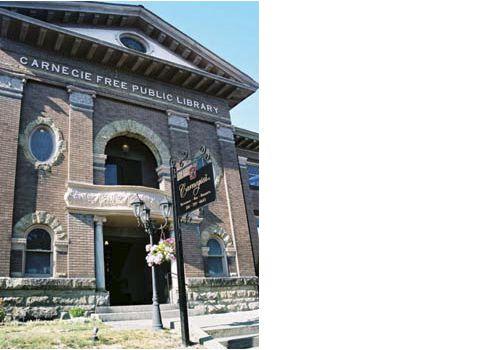
Environmental sustainability starts with preserving and reusing our existing historic structures
by Darcy Mertz Krewson.
Sustainability, energy consumption and going ‘green’ continue to be hot topics of discussion with the effects of human activity being scrutinized more than ever before. This is particularly evident when it comes to the construction and design of our built environment. Although the focus tends to be on products made from sustainable or renewable resources and recycling existing materials, to be truly ‘green’ there is more that needs to be taken into consideration. Where and how a product is manufactured, as well as the energy consumed in transportation and production, are of equal importance when it comes to the potential negative effects a project may have on the environment. When all factors are taken into consideration, it is obvious that preserving our existing buildings is by far the most sustainable or ‘green’ choice.
Experts agree that a building which already exists is the greenest building.
While president of the National Trust for Historic Preservation Richard Moe stated that “demolishing a 500,000-square-foot building would create about 40,000 tons of debris. That’s enough to fill more than 250 railroad boxcars a train nearly 2 ½ miles long, headed for a landfill that’s probably almost full already. Constructing a new 500,000-square-foot building on the same site would release about as much carbon into the atmosphere as driving a car 30 million miles or 1,200 times around the world. Finally, don’t assume that the energy expended in manufacturing a building is offset by the efficient operation of new green buildings. In fact, a recent study found that it takes 35 to 50 years for an energy-efficient new home to recover the carbon expended in constructing it.”
James T. Kienle, FAIA, an architect and expert in historic preservation, wrote in his article titled ‘Can Historic Preservation Help Lead Us Out of the Recession’ that “structures built before 1940 are more sustainable by design because they considered natural heating and cooling with operable windows, greater thermal mass, more environmentally friendly materials, and natural orientation to the environment. Further, the energy to build them has already been spent.”
Additionally, the roads have already been constructed and power, utilities and sewer are on site which further reduces potential environmental impact. Besides, unlike much of new construction with its planned obsolescence, older buildings were built to last generations.
Sustainability can be in harmony with our past – it all starts by not destroying…and wasting…what is already there.
Ten percent of what the environmental movement does advances the cause of historic preservation.
But 100% of what the preservation movement does advances the cause of the environment. – by Donovan Rypkema
Do-No-Harm to Historic Buildings – Do not destroy anything and preserve as much as possible. Be a steward of our historic buildings and show a deep level of respect for them.

0 comments